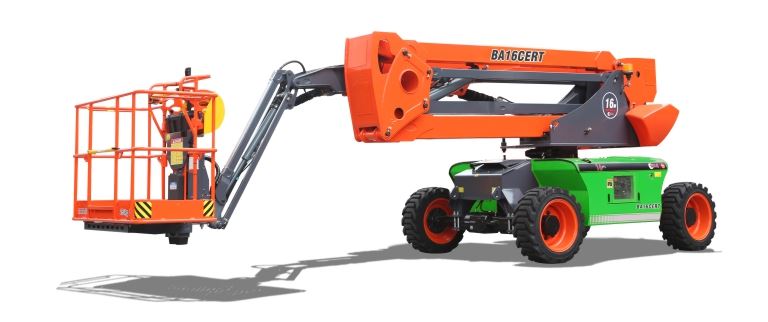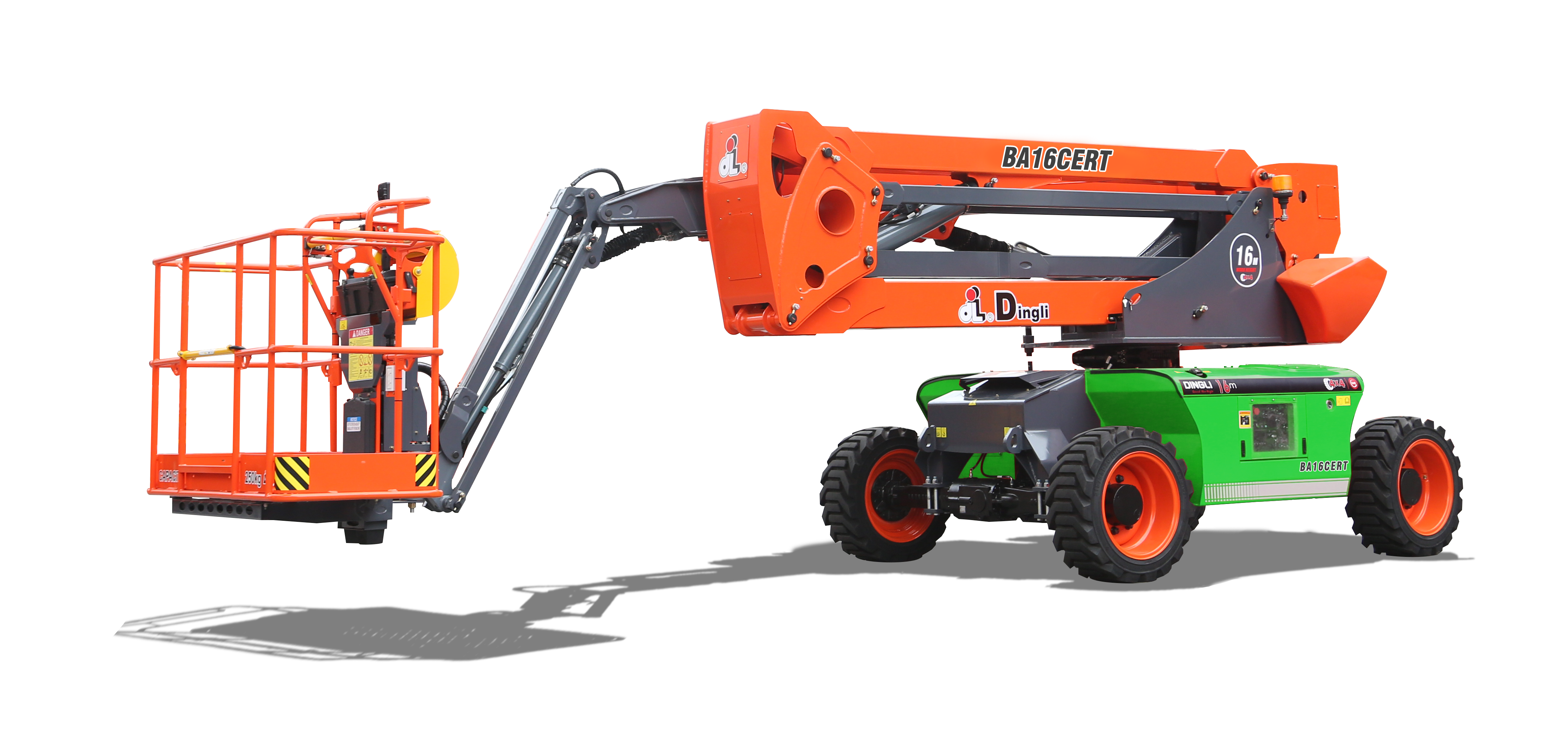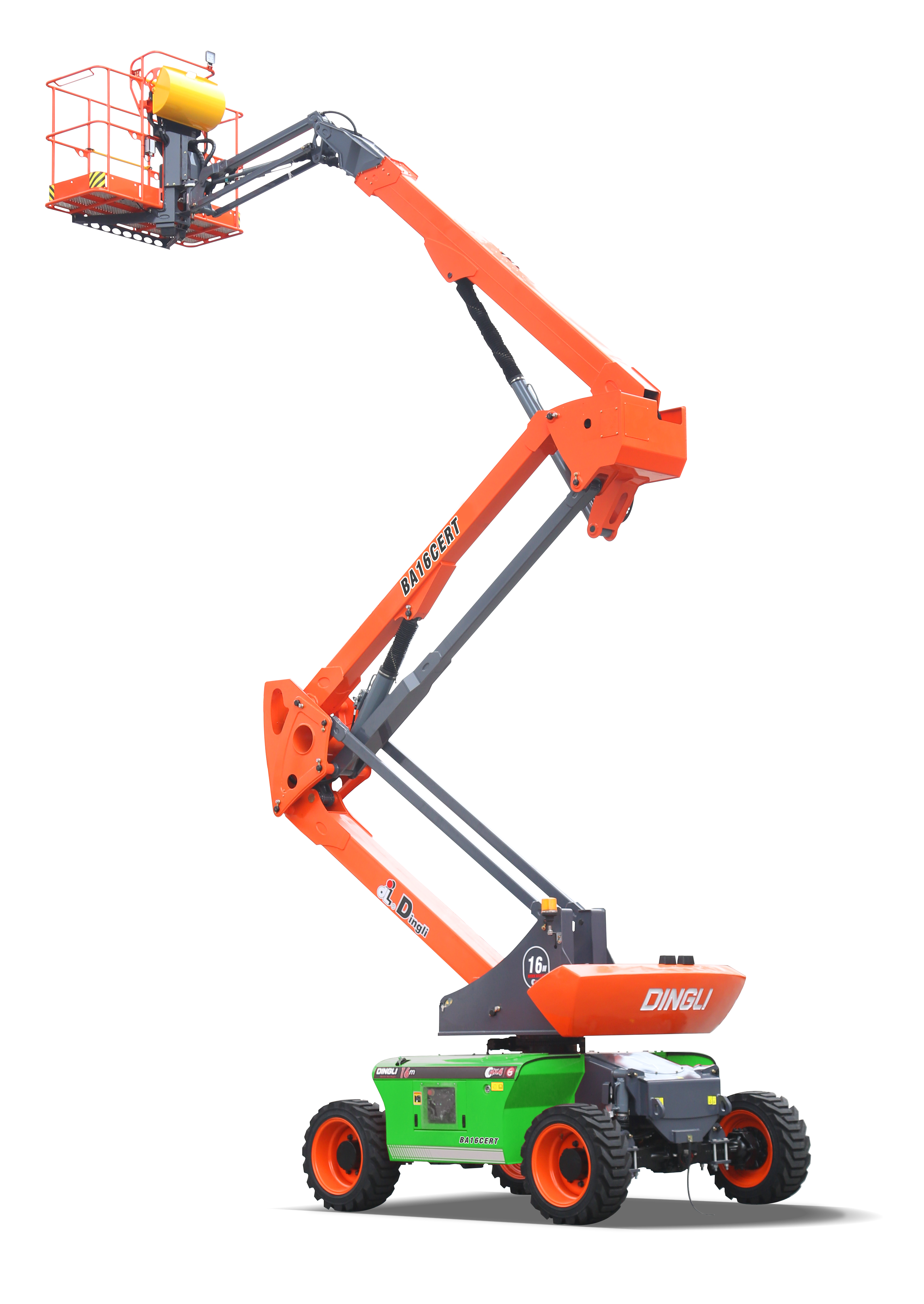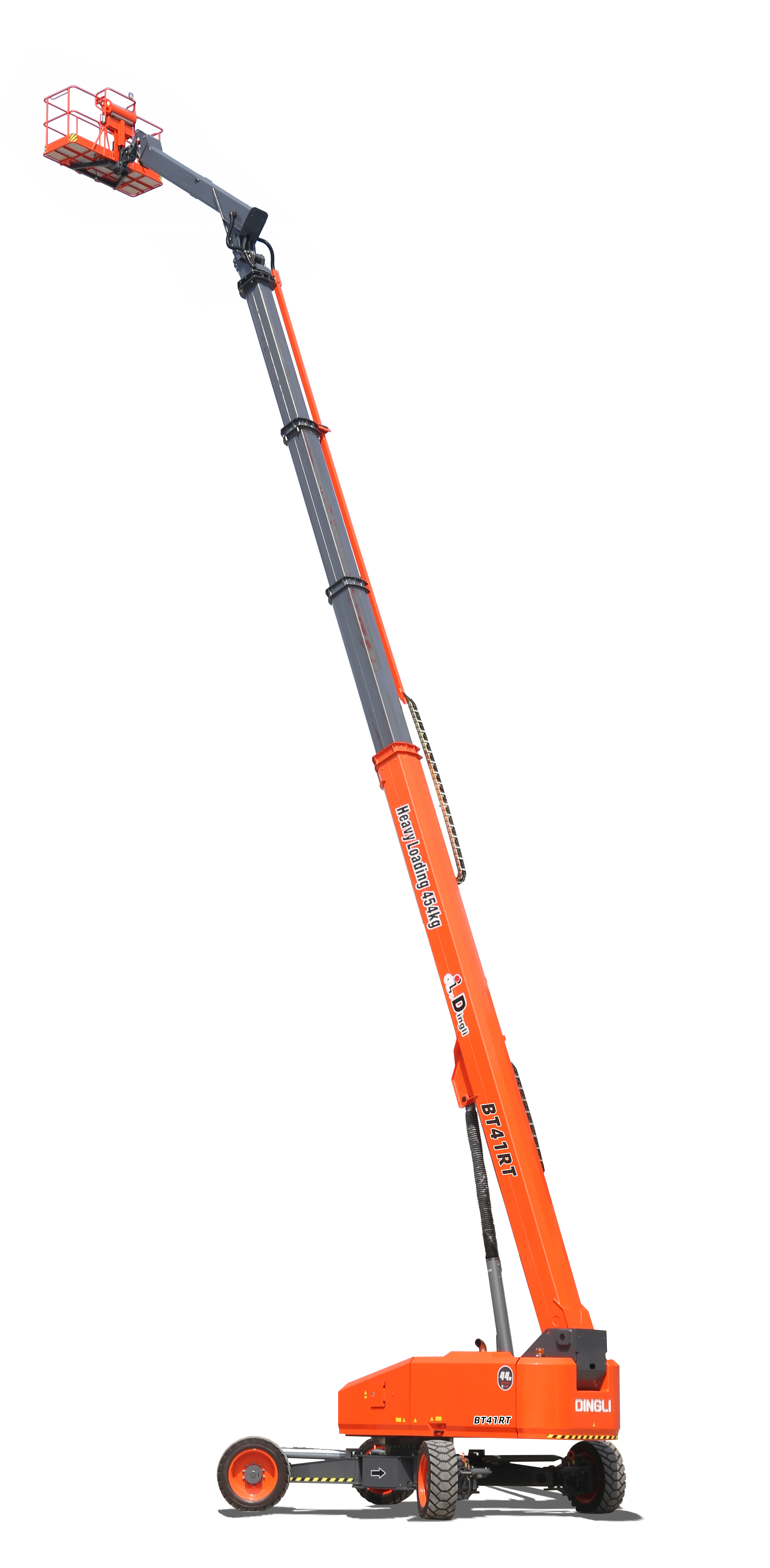October 14,2025
10 Things You Must Know About Boom Lift

Table of Content:
- What is a boom lift?
- Articulated vs telescopic boom lift—what’s the difference?
- How high can boom lift reach?
- Electric vs diesel boom lift—what’s better for your site?
- What’s the boom lift rental cost in India?
- How to choose the best boom lift for rough terrain?
- What’s the typical height and weight capacity of boom lift?
- What industries use boom lifts in India?
- What are the safety & certification rules for boom lift?
- What goes in a boom lift maintenance checklist?
What is a Boom Lift?
A boom lift is a type of aerial work platform with an extendable arm (or “boom lifter”) used to safely lift workers and materials to elevated, hard-to-reach areas. It provides both vertical and horizontal reach, making it ideal for construction, maintenance, installation, and inspection work on tall structures or complex sites. In India, boom lift types and applications range widely—from indoor electrical maintenance to rough terrain construction. Choosing the right type for your industry-specific task is key to both productivity and safety.
In India, boom lift types and applications range widely—from indoor electrical maintenance to rough terrain construction. Choosing the right type for your industry-specific task is key to both productivity and safety.
Articulated vs. Telescopic Boom Lifts: What’s the Difference?
Understanding the difference between articulated and telescopic boom lifts helps determine the best equipment for your project:
Articulated Boom Lifts (Knuckle Booms): Has jointed sections that bend, allowing it to reach up and over obstacles or around corners. Perfect for confined spaces or complex job sites.
Telescopic Boom Lifts (Straight Booms): Features a straight, extendable boom for maximum horizontal and vertical reach in open areas. Best for jobs that require long, straight access at height.
When comparing articulated vs telescopic boom lift options, consider your worksite layout and whether vertical reach or obstacle navigation is more critical.
How high can it reach?
Boom lifts typically reach between 11 meters and over 52 meters, depending on the model. Articulated models often have slightly lower maximum height but better maneuverability, while telescopic models provide maximum outreach for tall or wide-reaching tasks.
For detailed selection, refer to a boom lift machine height capacity guide or consult an expert to match your job’s elevation needs.
What is the Weight Capacity of a Boom Lifter? 
Most boom lifts have a weight capacity ranging from 225–453 kg. This varies by model and manufacturer. Always check the equipment’s rated load to ensure safe lifting of workers, tools, and materials without exceeding limits.
Power Sources: Electric vs Diesel Boom Lifts
Boom lifts in India are commonly powered in one of three ways:
a) Diesel Boom Lifts: Ideal for outdoor and rough terrain sites. These are robust, reliable, and offer longer runtime, making them the best boom lift for rough terrain applications.
b) Electric Boom Lifts: Quieter, emission-free, and ideal for indoor or enclosed environments.
c) Hybrid Boom Lifts: A flexible solution that lets you switch between electric and diesel depending on the environment.
Choosing between an electric vs diesel boom lift depends on your worksite conditions, emission concerns, and operational costs.
Boom Lift Rental and Cost Considerations
For businesses with short-term or project-based needs, boom lift rental is a cost-effective option. If you're in the capital region, you'll find competitive boom lift rental price in India, which vary based on:
- Type (articulated, telescopic, towable)
- Height capacity
- Duration of rental (daily, weekly, monthly)
- Additional safety or operational features
If portability is essential, towable boom lift hire in India offers quick mobility with ease of transport, especially for smaller maintenance teams or sites with access restrictions.
Industries Using Boom Lifts in India
Boom lifts serve a wide variety of industries in India:
- Construction & Real Estate: Façade work, glass installation, exterior painting
- Telecommunications: Tower inspections and antenna installations
- Utilities: Streetlight repairs, transformer maintenance
- Warehousing & Logistics: Inventory management at heights
- Film & Event Production: Lighting setups, rigging, and camera work
- Forestry & Landscaping: Tree trimming and maintenance
Each of these sectors benefits from choosing the appropriate boom lift types and applications in India that suit the nature and frequency of their tasks.
Operating a Boom Lift Safely: Key Tips
Before operating, always refer to certified training protocols. Here are safety tips for operating a boom lift:
- Training & Certification: Operators must have up-to-date boom lift certification requirements in India, especially for construction and industrial use.
- Pre-use Inspection: Check hydraulic systems, tires, safety rails, and platform.
- Stable Setup: Use on level ground; deploy outriggers if available.
- Weather Awareness: Avoid using in high winds or rain.
- Proper PPE: Always wear harnesses, helmets, and high-visibility clothing.
- Clear Communication: Use radios or hand signals between ground and lift operators.
Boom Lift Maintenance Checklist
To ensure long-term performance and safety, implement a boom lift maintenance checklist that includes:
- Daily inspection before use
- Hydraulic fluid checks
- Tire and brake inspections
- Control panel and emergency stop testing
- Regular servicing as per manufacturer guidelines
Renting vs Purchasing a Boom Lift in India
- Renting is ideal for short-term or occasional use, with flexible plans and no maintenance responsibilities. It's a practical solution for companies exploring boom lift rental cost in India.
Purchasing is a long-term investment for businesses that require frequent or daily usage.
Evaluate total cost of ownership vs. rental flexibility before making a decision.
Transporting a Boom Lift
Moving a boom lift involves:
- Choosing a suitable vehicle (flatbed truck or trailer)
- Properly securing the lift with chains or straps
- Complying with local transport and road safety regulations
- Loading/unloading using ramps or cranes under supervision
Conclusion
Boom lifts are powerful and versatile tools used across India’s most demanding industries. Whether you're choosing between articulated vs telescopic boom lifts, evaluating the best boom lift for rough terrain, or comparing electric vs diesel boom lift options, having the right knowledge is key.
For short-term projects, consider towable boom lift hire in India or explore cost-effective boom lift rental options in India. Whatever your needs, remember that proper certification, maintenance, and safety practices are essential to successful operation.
Frequently Asked Questions (FAQ):
- What are the top 10 facts about boom lifts?
- Which boom lift types should I know about?
- What’s better for my project: telescopic or articulating boom lift?
- Should I rent or buy a boom lift for small projects?
- How do boom lifts improve efficiency and safety?